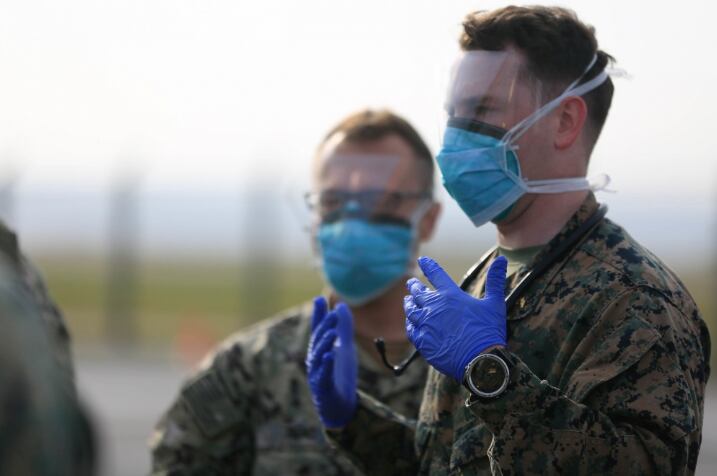Navy and Marine engineers successfully 3D-printed a medical cast aboard an airborne Marine Corps Osprey in June ― a technical innovation the Corps says could help save lives and limbs if widely deployed in combat zones.
Buttressing the Corps’ logistical capabilities with automated technology has been a cornerstone of Force Design 2030, a sweeping overhaul of the service branch debuted by Marine commandant Gen. David Berger in 2020.
Experts from the Monterey, California, Naval Postgraduate School, which spearheaded the test, said its success is a significant milestone in the Corps’ efforts.
Spencer Koroly, the engineer that developed the printer used in the demo, called the trial “revolutionary.”
“Nothing is more expeditionary than printing medical devices and swarm robotics in the back of an aircraft,” he said in a press release.
RELATED

The branch’s tech whizzes already have employed 3D printing in other domains, generating protective health gear, parts of a mine-clearing device and a barracks room.
Koroly and colleagues from the graduate school’s Consortium for Additive Manufacturing Research and Education — its 3D printing division — teamed up with the Marine Innovation Unit to pilot the procedure during an integrated training exercise at Marine Corps Air Ground Combat Center Twentynine Palms, California, in mid-June.
The Marine Innovation Unit is the Corps’ new Reserve unit, headquartered in New York, that is working to connect Marines with the latest in innovative technology.
The printer, which is no bigger than a small mini-fridge, was installed in the main bay of an MV-22 Osprey.
The device, dubbed the “advanced manufacturing operational system,” generated a plastic medical brace modeled on a scan of a Marine’s arm taken during the exercise.
It’s unclear exactly how long its production took.
The “cast itself was printed while the Osprey was engaged in multiple ground and flight modes, including taxi, takeoff and in-flight maneuvers,” a Naval Postgraduate School spokesperson said in the news release.
Ensuring troops can receive lifesaving medical care soon after a battlefield injury is not guaranteed, and will be less so in the next big fight ― especially as Marines will be more dispersed than they were in battles in Iraq and Afghanistan.
Marine engineers hope portable manufacturing and 3D printing can help produce and maintain equipment close to where troops are fighting, moving “the factory to the front line” and cutting losses, the press release said.
Lt. Col. Michael Radigan, the Marine Innovation Unit liaison for the test, said in the news release, “We are just scratching the surface on the capabilities that will come from being able to 3D print in flight.”
“Dozens of printers being installed in a modular fashion aboard aircraft brings the ability for mobile production at a scale we have not experienced before.”
Jaime Moore-Carrillo is an editorial fellow for Military Times and Defense News. A Boston native, Jaime graduated with degrees in international affairs, history, and Arabic from Georgetown University, where he served as a senior editor for the school's student-run paper, The Hoya.





